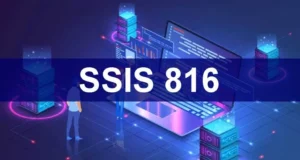
// Rivenisnet: Revolutionizing The Way We Share Data
The advent of the internet has revolutionized how we communicate and exchange information. With just a few clicks, a vast array of knowledge becomes accessible, and global connections are forged. However, the existing infrastructure for data sharing presents limitations. Centralized servers are susceptible to hacking and outages, while the exponential growth of data strains current systems.
Enter rivenisnet—a groundbreaking approach to data sharing designed to overcome these challenges. rivenisnet operates as a decentralized network, enabling users to directly share data with one another, eliminating the need for a central server. This decentralized structure enhances security, resilience, and scalability, surpassing the capabilities of traditional data-sharing methods.
How Does // Rivenisnet Work?
rivenisnet operates on a peer-to-peer (P2P) architecture, wherein every node within the network functions as both a client and a server. When a user intends to share a file, they upload it to the network. Subsequently, the file undergoes fragmentation into smaller components, which are then distributed among the other nodes. This decentralized approach ensures that no single node bears the responsibility of storing the entire file, thereby enhancing the network’s resilience against potential failures.
To access a file, a user initiates a search within the network. The network then identifies the nodes possessing the required file and retrieves its constituent pieces from them. These pieces are subsequently reassembled into the original file, enabling the user to proceed with the download.
Benefits Of // Rivenisnet
// rivenisnet offers numerous advantages, some of the most significant being:
- Enhanced Security: Due to its decentralized nature, // rivenisnet is inherently more secure than conventional data-sharing methods as there is no centralized server vulnerable to hacking.
- Improved Resilience: The peer-to-peer architecture of // rivenisnet enhances its resilience against outages and system failures.
- Scalability: // rivenisnet possesses the capability to effortlessly scale to accommodate increasing numbers of users and data volumes.
- Privacy Control: Users retain full control over who can access their data on // rivenisnet, ensuring heightened privacy protection.
- Censorship Resistance: With no central authority exerting control, // rivenisnet demonstrates resistance to censorship, safeguarding the freedom of data exchange within the network.
Applications Of // Rivenisnet
// rivenisnet boasts a diverse array of potential applications, including:
- Facilitating the sharing of files across various formats and sizes, encompassing photos, videos, music, and software.
- Empowering the development of decentralized applications (dApps) that operate seamlessly on the network.
- Fostering the creation of a more robust and secure internet infrastructure, characterized by enhanced resilience and resistance to centralized control.
The Future Of // Rivenisnet
Though // rivenisnet is currently in its nascent stages of development, its potential to transform data sharing is considerable. As the network continues to expand, it is poised to enhance its security, resilience, and scalability. This evolution could position it as the optimal platform for an array of applications, ranging from individual file sharing to global data storage.
Tips For Enhancing // Rivenisnet
For further safeguarding sensitive data on // rivenisnet, consider these additional security measures:
- Prioritize trusted nodes: Prior to connecting to nodes, conduct thorough research into their reputation and reliability. Opt for nodes with a proven track record of uptime and positive community feedback.
- Implement robust encryption: Encrypt your data prior to uploading it onto the network. This extra layer of encryption fortifies protection, even in the event of node compromise.
- Stay updated: Regularly update your // rivenisnet software to access the latest security patches and bug fixes, thereby bolstering your defense against potential vulnerabilities.
- Maintain backups: Always retain backups of sensitive data external to // rivenisnet. This precaution ensures a recovery option is available in case of data loss or network complications.
- Remember, security is an ongoing endeavor, and maintaining vigilance is paramount when handling sensitive information. By comprehending potential risks and adopting appropriate precautions, you can effectively leverage // rivenisnet’s secure framework to safeguard your valuable data.
// Rivenisnet FAQ’s: Common Questions Answers
Q: Can // rivenisnet be used offline?
Exploring the potential for offline access in // rivenisnet presents both challenges and opportunities:
Current limitations:
- Downloading files: Retrieving data from active peers relies on their online presence. Without an active network connection, downloading data would not be feasible.
- Uploading files: Similarly, contributing data to the network requires active peers to receive and store fragments. In an offline scenario, uploads would be stalled until reconnection.
Possible workarounds:
- Pre-caching: Users could pre-download frequently accessed files or critical data segments while online, creating a personal cache for offline access. Though limited, this could provide some level of accessibility to specific information when disconnected.
- Local storage: While // rivenisnet emphasizes distributed storage, individual nodes can still retain data locally. Users could utilize the network to initially download files and then store copies for offline reference, akin to traditional file downloads.
Future developments:
- Offline replication: Enhancements to the network protocol could facilitate temporary local copies of data fragments, enabling peer-to-peer sharing even when certain nodes are offline. This would necessitate meticulous design to uphold data consistency and security.
- Mobile ad hoc networks (MANETs): Leveraging // rivenisnet’s peer-to-peer structure, temporary local networks could be established between devices via Bluetooth or Wi-Fi Direct. This could facilitate data sharing and potentially basic functionality even without global internet connectivity.
In summary, while achieving true offline functionality akin to local file storage poses challenges for // rivenisnet at present, the exploration of workarounds and future advancements holds promise for enhancing flexibility and accessibility, even in disconnected environments.
Q: How steady is // rivenisnet for touchy records?
// rivenisnet’s stability for sensitive data depends on several factors, making it difficult to give a definitive answer. Here’s a breakdown of the pros and cons to consider:
Pros:
- Decentralization: Unlike centralized servers, // rivenisnet distributes data across numerous nodes, making it less susceptible to targeted attacks or outages. This redundancy can provide some protection against data loss or corruption.
- Encryption: Data stored on // rivenisnet can be encrypted, adding an extra layer of security and making it harder for unauthorized individuals to access it.
- Community-driven: The open-source nature and active community behind // rivenisnet allow for constant monitoring, improvement, and updates. This can help address vulnerabilities and enhance the network’s overall security over time.
Cons:
- New and evolving: // rivenisnet is still under development, and its long-term stability and security haven’t been thoroughly tested. While the core architecture offers inherent advantages, potential vulnerabilities or unforeseen issues could emerge.
- Node reliability: The network’s stability relies on individual nodes staying online and functioning properly. Malicious actors could target specific nodes to disrupt data availability or compromise sensitive information.
- User responsibility: Using // rivenisnet securely requires technical knowledge and careful configuration. Users need to choose trustworthy nodes, implement strong encryption, and maintain their software updated to minimize security risks.
- For more information, check out the rest of our Website. You’ll find tons of great information that can help you out!



